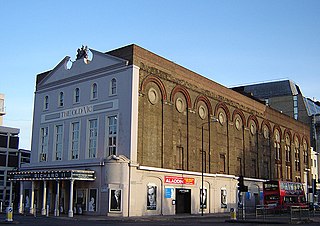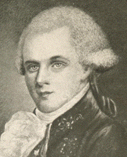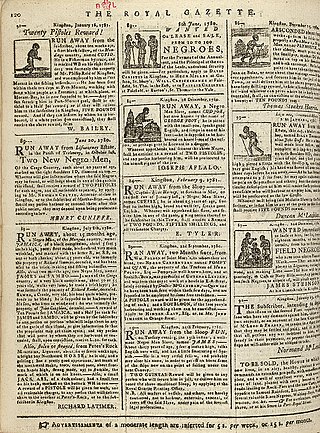
David Garrick was an English actor, playwright, theatre manager and producer who influenced nearly all aspects of European theatrical practice throughout the 18th century, and was a pupil and friend of Samuel Johnson. He appeared in a number of amateur theatricals, and with his appearance in the title role of Shakespeare's Richard III, audiences and managers began to take notice.

The Old Vic is a 1,000-seat, not-for-profit producing theatre in Waterloo, London, England. Established in 1818 as the Royal Coburg Theatre, and renamed in 1833 the Royal Victoria Theatre. In 1871 it was rebuilt and reopened as the Royal Victoria Palace. It was taken over by Emma Cons in 1880 and formally named the Royal Victoria Hall, although by that time it was already known as the "Old Vic". In 1898, a niece of Cons, Lilian Baylis, assumed management and began a series of Shakespeare productions in 1914. The building was damaged in 1940 during air raids and it became a Grade II* listed building in 1951 after it reopened.

Theater in the United States is part of the old European theatrical tradition and has been heavily influenced by the British theater. The central hub of the American theater scene is Manhattan, with its divisions of Broadway, Off-Broadway, and Off-Off-Broadway. Many movie and television stars have gotten their big break working in New York productions. Outside New York, many cities have professional regional or resident theater companies that produce their own seasons, with some works being produced regionally with hopes of eventually moving to New York. U.S. theater also has an active community theater culture, which relies mainly on local volunteers who may not be actively pursuing a theatrical career.
The Old American Company was an American theatre company. It was the first fully professional theatre company to perform in North America. It also played a vital role in the theatre history of Jamaica. It was founded in 1752 and disbanded in 1805. It was known as the Hallam Company (1752–1758), the American Company (1758–1785) and the Old American Company (1785–1805). With a few temporary exceptions, the Company enjoyed a de facto monopoly of professional theatre in the United States until 1790.

The Temple Theatre is an historic performance center in Sanford, Lee County, North Carolina. The Temple Theatre was built in 1925 by Robert Ingram, Sr., at a time when Sanford had a population of only 3,500. The name "Temple" comes from being located next door to what was once Sanford's Masonic Lodge. The following quote ran in a 1925 issue of the Sanford Express, "In erecting this modern theater, he has spared no expense to make it an up-to-date playhouse." It is a 50 feet wide-by-92 feet deep, two-story, brick building decorated with cut stone details in a blend of Colonial Revival and Art Deco styles.
Lewis Hallam was an English-born actor and theatre director in the colonial United States.

Thomas Wignell was an English-born actor and theatre manager in the colonial United States.

Lewis Hallam Jr. was an England-born American actor and theater manager, son of Lewis Hallam, one of the pioneers of Theater in the United States, and Sarah Hallam Douglass. He was the leading actor of the Old American Company, at the time the only theater in America, and the manager of the same Company in 1779-1796.

Nancy Hallam, was an English-born American stage actress and singer. She was engaged in the Old American Company, the first permanent theater company in America, and as such belonged to the first generation of pioneer actresses in North America.

John Street Theatre, situated at 15–21 John Street, sometimes called "The Birthplace of American Theatre", was the first permanent theatre in the Financial District of Manhattan, New York. It opened on December 7, 1767, and was operated for several decades by the American Company. It closed on January 13, 1798.

John Hodgkinson was a well-known actor in the United States in the late 18th and early 19th century. He was born in England and came to the United States in 1792. William Dunlap and Hodgkinson managed the John Street Theatre together for a few years in the 1790s.

John Henry was an Irish-born actor and early American actor and theatre manager.

The Van Horne House is a historic building at 941 East Main Street near Bound Brook in Bridgewater Township, Somerset County, New Jersey. The house was built c. 1750 and also known as Phil's Hill, after its owner, Philip Van Horne. It served as the headquarters for American General Benjamin Lincoln in 1777, during the American Revolutionary War, in particular the Battle of Bound Brook. Later, it served as the headquarters for American General William Alexander, Lord Stirling during the second Middlebrook encampment (1778–79). The house, on the early-18th-century Old York Road that connected Philadelphia to New York City, was a New Jersey landmark during the war. Since 2002, the Heritage Trail Association has used the house as its headquarters, including an exhibit space. It was added to the National Register of Historic Places on March 8, 2002, for its locally significant Colonial Revival architecture from 1937 to 1944.
Sarah Hallam Douglass was an English-born American stage actress and theatre director.
Margaret Cheer, was an English-born American stage actress known as Miss Cheer. She was engaged in the Old American Company, the first permanent theater company in America, and as such belonged to the first generation of pioneer actresses in North America.

Alexander Aikman was a Scottish printer, newspaper publisher, planter, and member of Jamaica's House of Assembly. From 1805 to 1825, he was a member of the House of Assembly as the representative of Saint George parish.
John Anderson Castello was a Guyanese child actor and journalist who established his reputation in Jamaica, whither he moved as a teenager. Following Master Betty, known as "the Young Roscius", Castello was called "the West Indian Roscius". He performed in Spanish Town in October 1816 at the age of thirteen. Castello remained popular with Jamaican theatre-goers until 1818, when he reached puberty and his voice broke.
Kingston Theatre, was a theatre in Kingston, Jamaica between 1775 and 1838. It was a major cultural center of the island during its duration and had a good reputation also outside of the island, giving Jamaica a name of cultural sophistication, and it remained the main theatre of Jamaica during its history.

Frances Brett Hodgkinson (1771–1803) was an English-born American theater actress. She played major roles in high comedy and tragedy plays and was also a noted performer of opera. She was the second wife of John Hodgkinson, a famous American stage actor.
The Carib Theatre, also known as the Carib 5, is a cinema in northern Kingston, Jamaica. Opened in 1938, it has been owned and operated by the Palace Amusement Company since ca. 1939. The Carib was the largest and highest-grossing theatre in the West Indies, and was once Jamaica's largest building. It served as a one-screen facility until a 1996 fire and 1997 renovation/conversion into a five-screen multiplex.












